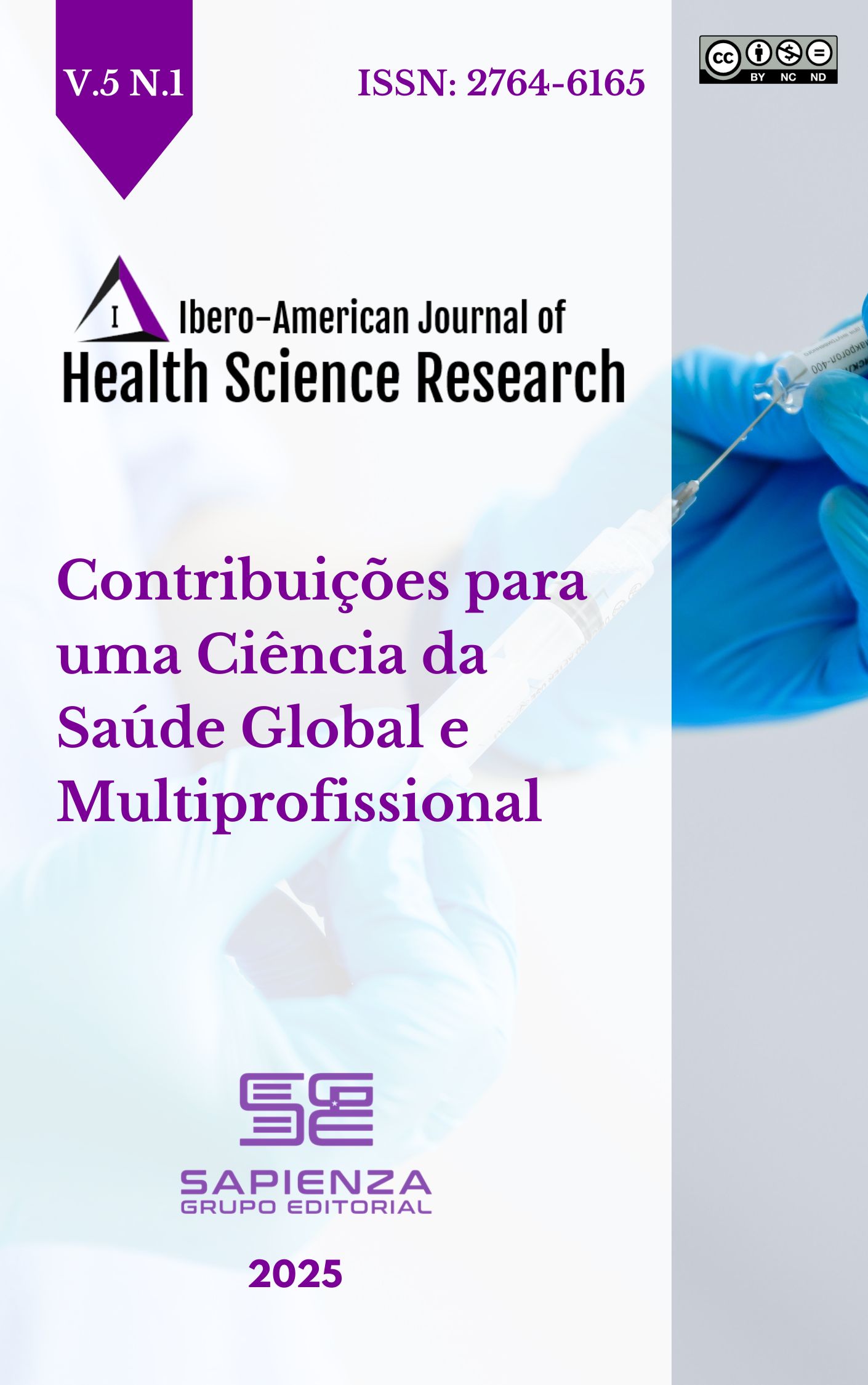Manejo de las cicatrices hipertróficas y queloides: enfoques actuales
DOI:
https://doi.org/10.56183/iberojhr.v5i1.723Palavras-chave:
Cicatrices hipertróficas, Queloides, Manejo clínico, Tratamientos actuales, Terapia cicatricial.Resumo
Las cicatrices hipertróficas y los queloides representan una respuesta anómala del proceso de cicatrización que puede generar importantes implicaciones estéticas, funcionales y psicológicas en los pacientes. Este artículo de revisión narrativa tiene como objetivo analizar los enfoques actuales en el manejo de estas lesiones, abarcando desde las intervenciones tradicionales hasta las terapias más innovadoras. Se exploran las opciones quirúrgicas, el uso de corticosteroides intralesionales, la terapia con láser, la crioterapia y los tratamientos tópicos, así como avances en terapias biológicas y técnicas emergentes como la terapia génica y el uso de biomateriales. Además, se discuten factores predisponentes, mecanismos fisiopatológicos y estrategias de prevención para optimizar los resultados clínicos. Este análisis integral busca proporcionar a los profesionales de la salud una guía actualizada y basada en evidencia para la toma de decisiones en el manejo de cicatrices hipertróficas y queloides, promoviendo un abordaje multidisciplinario y personalizado para mejorar la calidad de vida de los pacientes.
Referências
Mokos ZB, Jović A, Grgurević L, Dumić-Čule I, Kostović K, Čeović R, Marinović B. Current Therapeutic Approach to Hypertrophic Scars. Front Med (Lausanne). 2017 Jun 20;4:83. doi: 10.3389/fmed.2017.00083.
Poetschke J, Gauglitz GG. Current options for the treatment of pathological scarring. J Dtsch Dermatol Ges. 2016 May;14(5):467-77. doi: 10.1111/ddg.13027.
Lian N, Li T. Growth factor pathways in hypertrophic scars: Molecular pathogenesis and therapeutic implications. Biomed Pharmacother. 2016 Dec;84:42-50. doi: 10.1016/j.biopha.2016.09.010.
Hinz B. The role of myofibroblasts in wound healing. Curr Res Transl Med. 2016 Oct-Dec;64(4):171-177. doi: 10.1016/j.retram.2016.09.003.
Jung Y, Cui HS, Lee EK, Joo SY, Seo CH, Cho YS. Effects of Factors Influencing Scar Formation on the Scar Microbiome in Patients with Burns. Int J Mol Sci. 2023 Nov 6;24(21):15991. doi: 10.3390/ijms242115991.
El Kinani M, Duteille F. Scar Epidemiology and Consequences. 2020 Dec 8. In: Téot L, Mustoe TA, Middelkoop E, Gauglitz GG, editors. Textbook on Scar Management: State of the Art Management and Emerging Technologies [Internet]. Cham (CH): Springer; 2020. Chapter 6.
Berman B, Maderal A, Raphael B. Keloids and Hypertrophic Scars: Pathophysiology, Classification, and Treatment. Dermatol Surg. 2017 Jan;43 Suppl 1:S3-S18. doi: 10.1097/DSS.0000000000000819.
Ogawa R, Akaishi S, Kuribayashi S, Miyashita T. Keloids and Hypertrophic Scars Can Now Be Cured Completely: Recent Progress in Our Understanding of the Pathogenesis of Keloids and Hypertrophic Scars and the Most Promising Current Therapeutic Strategy. J Nippon Med Sch. 2016;83(2):46-53. doi: 10.1272/jnms.83.46.
Choi C, Mukovozov I, Jazdarehee A, Rai R, Sachdeva M, Shunmugam M, Zaslavsky K, Byun S, Barankin B. Management of hypertrophic scars in adults: A systematic review and meta-analysis. Australas J Dermatol. 2022 May;63(2):172-189. doi: 10.1111/ajd.13790.
Elsaie ML. Update on management of keloid and hypertrophic scars: A systemic review. J Cosmet Dermatol. 2021 Sep;20(9):2729-2738. doi: 10.1111/jocd.14310.
Del Toro D, Dedhia R, Tollefson TT. Advances in scar management: prevention and management of hypertrophic scars and keloids. Curr Opin Otolaryngol Head Neck Surg. 2016 Aug;24(4):322-9. doi: 10.1097/MOO.0000000000000268.
Oliveira GV, Metsavaht LD, Kadunc BV, Jedwab SKK, Bressan MS, et al. Treatment of keloids and hypertrophic scars. Position statement of the Brazilian expert group GREMCIQ. J Eur Acad Dermatol Venereol. 2021 Nov;35(11):2128-2142. doi: 10.1111/jdv.17484.
Kim SW. Management of keloid scars: noninvasive and invasive treatments. Arch Plast Surg. 2021 Mar;48(2):149-157. doi: 10.5999/aps.2020.01914.
Morelli Coppola M, Salzillo R, Segreto F, Persichetti P. Triamcinolone acetonide intralesional injection for the treatment of keloid scars: patient selection and perspectives. Clin Cosmet Investig Dermatol. 2018 Jul 24;11:387-396. doi: 10.2147/CCID.S133672.
Barone N, Safran T, Vorstenbosch J, Davison PG, Cugno S, Murphy AM. Current Advances in Hypertrophic Scar and Keloid Management. Semin Plast Surg. 2021 Aug;35(3):145-152. doi: 10.1055/s-0041-1731461.
Kim EY, Hussain A, Khachemoune A. Evidence-based management of keloids and hypertrophic scars in dermatology. Arch Dermatol Res. 2023 Aug;315(6):1487-1495. doi: 10.1007/s00403-022-02509-x.
Leszczynski R, da Silva CA, Pinto ACPN, Kuczynski U, da Silva EM. Laser therapy for treating hypertrophic and keloid scars. Cochrane Database Syst Rev. 2022 Sep 26;9(9):CD011642. doi: 10.1002/14651858.CD011642.pub2.
Worley B, Kim K, Jain-Poster K, Reynolds KA, Merkel EA, et al. Treatment of traumatic hypertrophic scars and keloids: a systematic review of randomized control trials. Arch Dermatol Res. 2023 Sep;315(7):1887-1896. doi: 10.1007/s00403-023-02535-3.
Frech FS, Hernandez L, Urbonas R, Zaken GA, Dreyfuss I, Nouri K. Hypertrophic Scars and Keloids: Advances in Treatment and Review of Established Therapies. Am J Clin Dermatol. 2023 Mar;24(2):225-245. doi: 10.1007/s40257-022-00744-6.
Knowles A, Glass DA 2nd. Keloids and Hypertrophic Scars. Dermatol Clin. 2023 Jul;41(3):509-517. doi: 10.1016/j.det.2023.02.010.
Wang J, Huang L, Li J, Xu R, Guo T, Huang T, et al. Efficacy and safety of sequential treatment with botulinum toxin type A, fractional CO2 laser, and topical growth factor for hypertrophic scar management: a retrospective analysis. Sci Rep. 2024 Nov 8;14(1):27233. doi: 10.1038/s41598-024-78094-y.
Lee HJ, Jang YJ. Recent Understandings of Biology, Prophylaxis and Treatment Strategies for Hypertrophic Scars and Keloids. Int J Mol Sci. 2018 Mar 2;19(3):711. doi: 10.3390/ijms19030711.
Jafarzadeh A, PourMohammad A, Goodarzi A. A systematic review of the efficacy, safety and satisfaction of regenerative medicine treatments, including platelet-rich plasma, stromal vascular fraction and stem cell-conditioned medium for hypertrophic scars and keloids. Int Wound J. 2024 Apr;21(4):e14557. doi: 10.1111/iwj.14557.
Arno AI, Gauglitz GG, Barret JP, Jeschke MG. Up-to-date approach to manage keloids and hypertrophic scars: a useful guide. Burns. 2014 Nov;40(7):1255-66. doi: 10.1016/j.burns.2014.02.011.
Downloads
Publicado
Como Citar
Edição
Seção
Licença
Copyright (c) 2025 Erika Daniela Barragán Vinueza, Ashley Mara Salgado Calderón, Evelyn Lisseth Gavilanes Benavides, Mishell Alexandra Alegría Balseca, David Patricio Espinoza Mena, Yessenia Fernanda Soria Cortez, Macarena Reyes Montalvo, Steven Patricio Valarezo Brazales

Este trabalho está licenciado sob uma licença Creative Commons Attribution-NonCommercial-NoDerivatives 4.0 International License.



